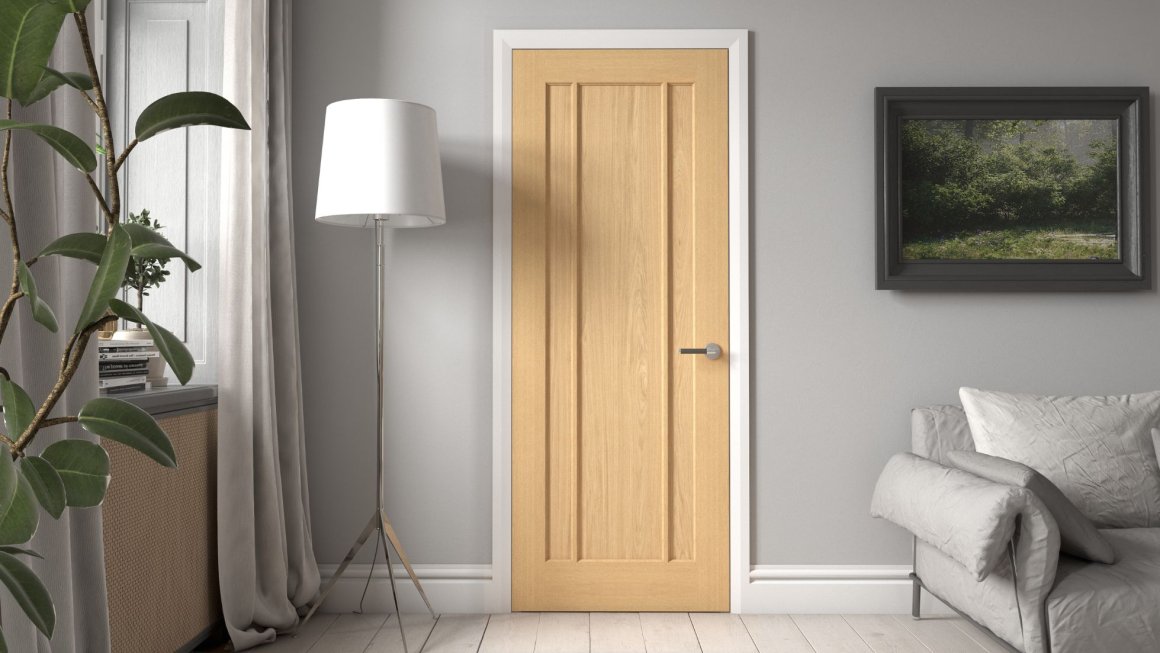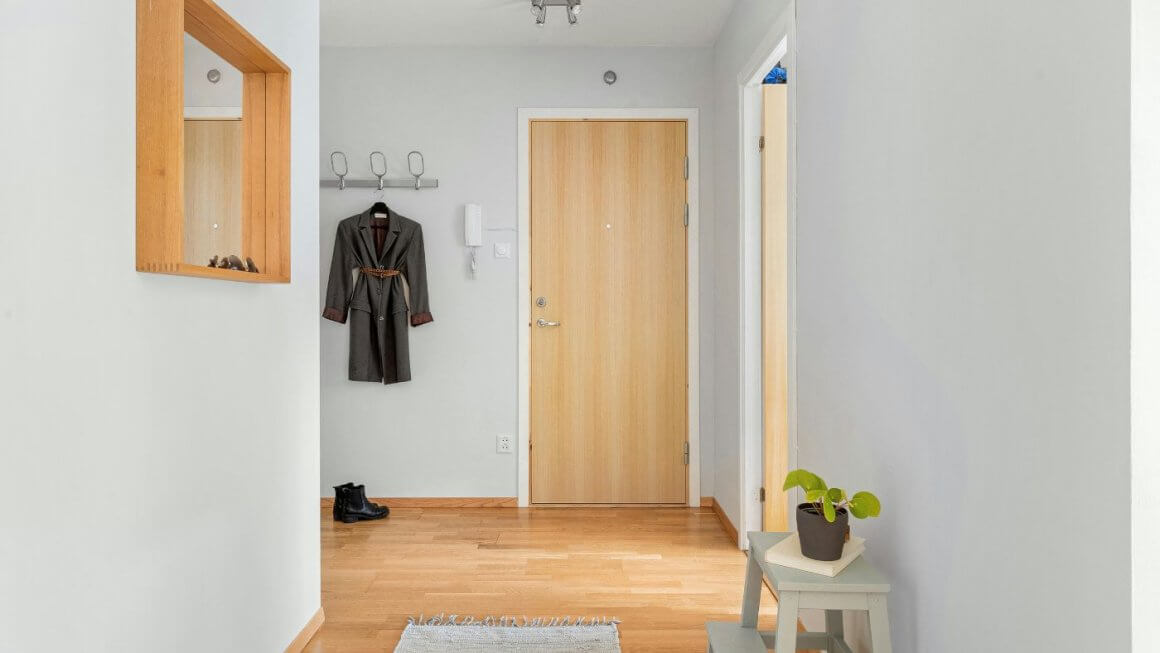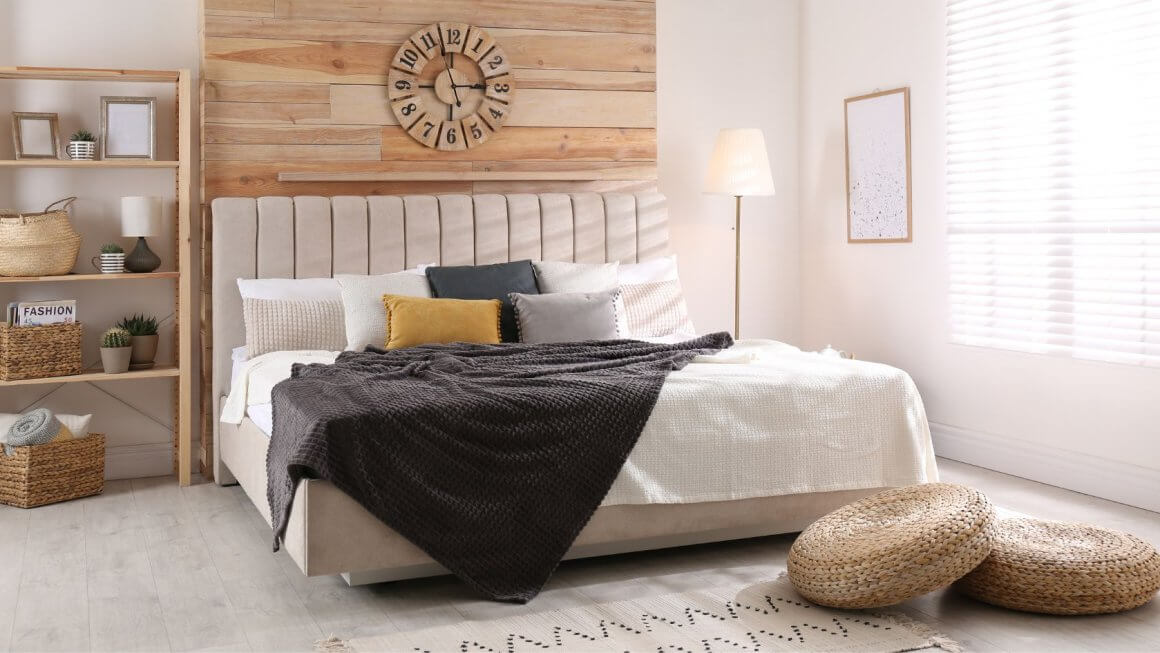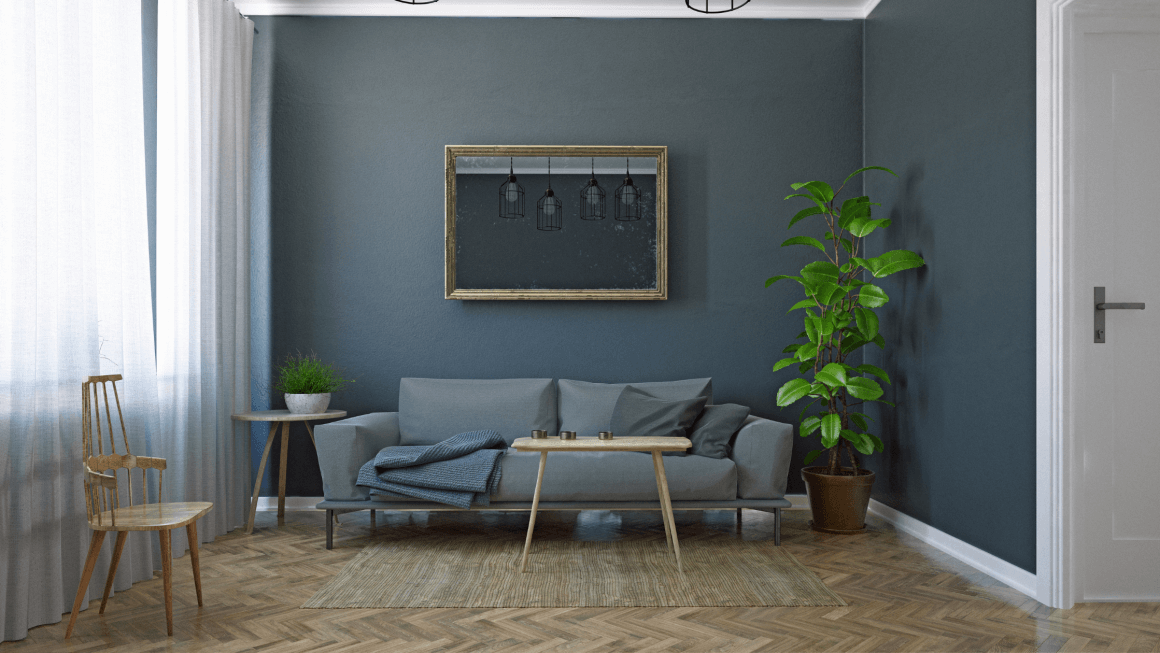Your interior doors can significantly impact the overall style and functionality of a space. But which interior doors are best? And what internal doors are in style right now? Use our guide to discover designs that complement your project’s aesthetic, whether that’s classic, contemporary or a beautiful mix of both.
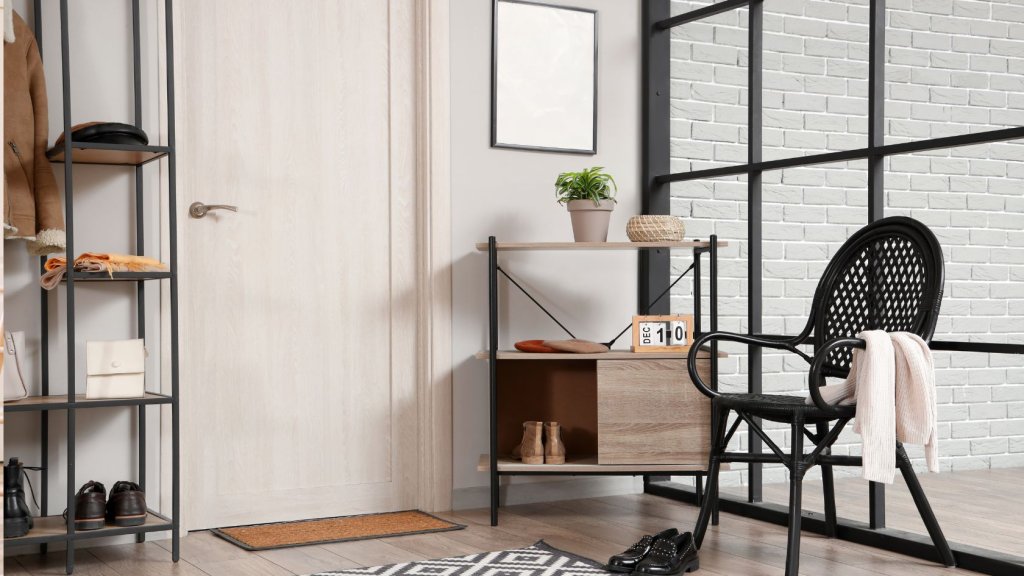
Which Internal Door is Best?
The “best” internal door depends on your specific needs and preferences.
Factors such as style, cost and desired level of insulation should be prioritised when shopping for new internal doors online.
Solid core doors and solid wood doors (made from oak, walnut or hardwood) offer excellent durability and soundproofing, making them ideal for bedrooms and home offices. However, they can be more expensive.
Hollow core doors, laminate doors or moulded doors are more affordable options but they’re more lightweight. This means they’re easy to install but may offer less soundproofing and insulation.
When it comes to tips for picking the best internal doors, it’s simple. Choose designs that align with your home’s aesthetic, your project budget and your specific requirements.
Learn more about the benefits of solid core doors, discover how to upgrade doors using DIY and find out what colour options for internal doors are most in style right now.
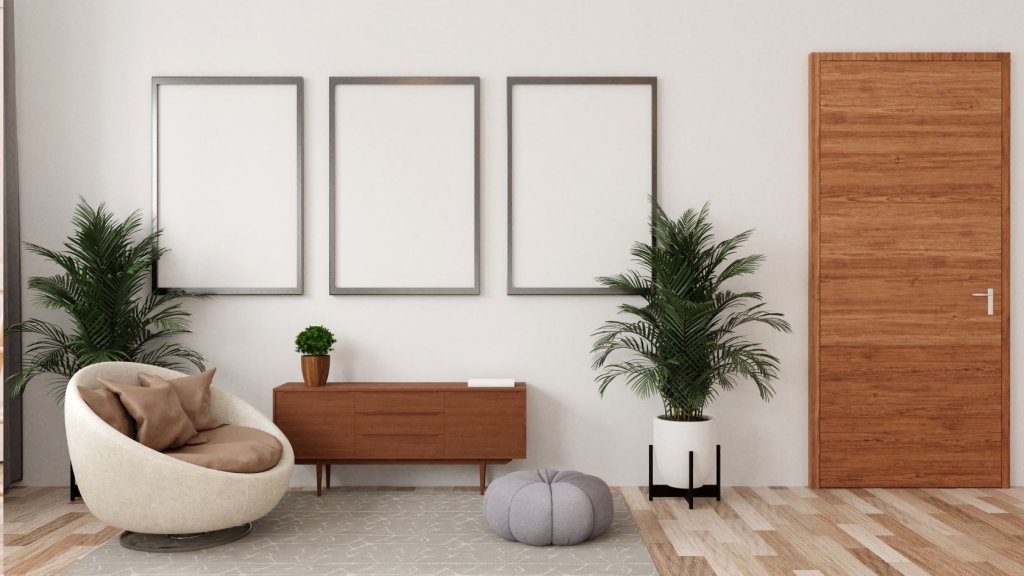
What is the Best Material for Internal Doors?
| Solid Wood Doors | A premium option often made from oak, pine or mahogany. Offers durability, style, and excellent sound insulation. |
| Engineered Wood Doors | An affordable option that combines layers of wood and other materials. Provides good stability and can be finished to resemble solid wood. |
| MDF (Medium-Density Fibreboard) | A versatile material that can be moulded into various shapes and sizes. Often used for on-trend and minimalist designs. |
| Hollow Core Doors | Lightweight and budget-friendly. Typically made from a honeycomb structure with a thin veneer. |
| Veneer Doors | These doors have a thin layer of real wood veneer over a core material, providing a more affordable way to achieve the look of solid wood. |
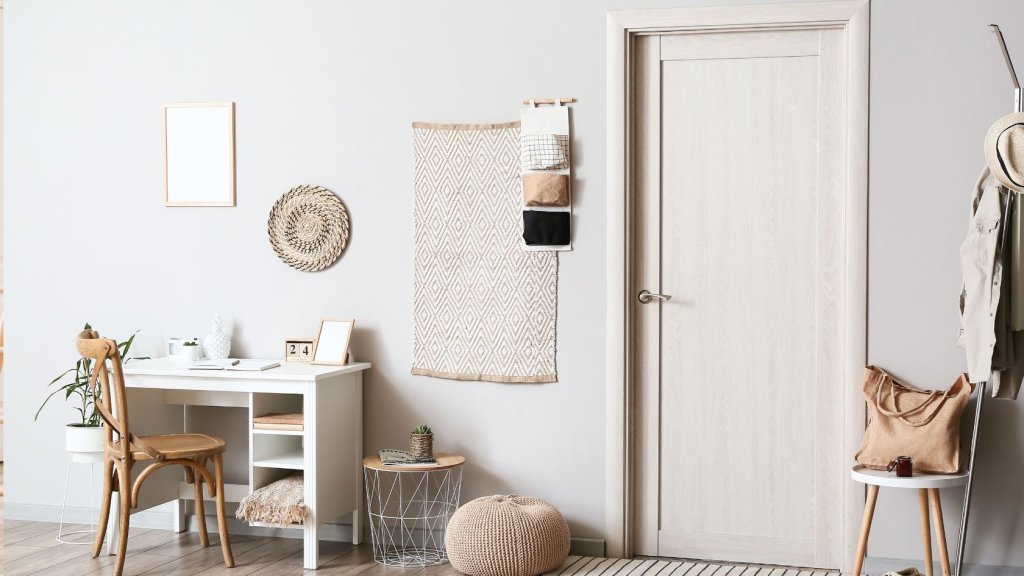
What is a Single Leaf Door?
This is the image that comes to mind when you imagine a typical door.
A standard single leaf door is perhaps the most common type of door. It consists of a single panel that swings open on hinges. This is a versatile option suitable for various applications, from interior doors in homes to exterior doors in commercial buildings.
Single leaf doors can be made from various materials (wood, aluminium or composite materials) and can be customised with different finishes, hardware and glazing options.
Use them for standard-sized doorways and provide a simple and efficient way to access rooms, entrances or exits.
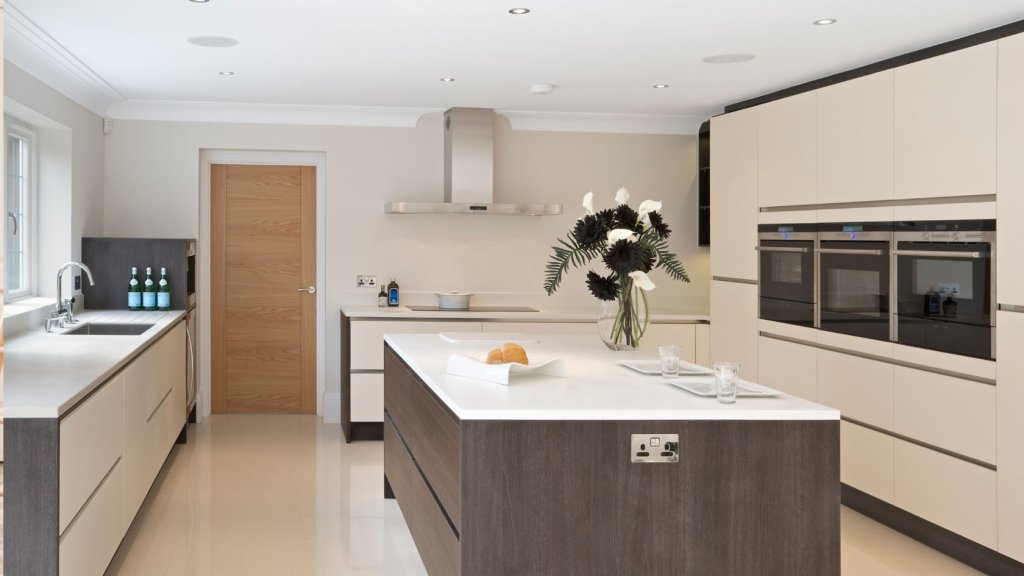
What is the Current Trend for Internal Doors?
The current trend for internal doors leans towards a blend of classic and contemporary styles. While traditional panel doors remain popular, there’s a rise in minimalist designs with clean lines and sleek finishes.
Glazed internal doors are also trending, as they create a sense of openness and allow natural light to flow through the home. Interestingly, there’s a growing interest in sustainable and eco-friendly materials, such as reclaimed wood and FSC-certified timber.
When it comes to tones and textures, interior door colour trends for the year ahead include deep shades of brown and grey along with unexpected pops of brighter hues and natural materials combined with the warmth of wood.
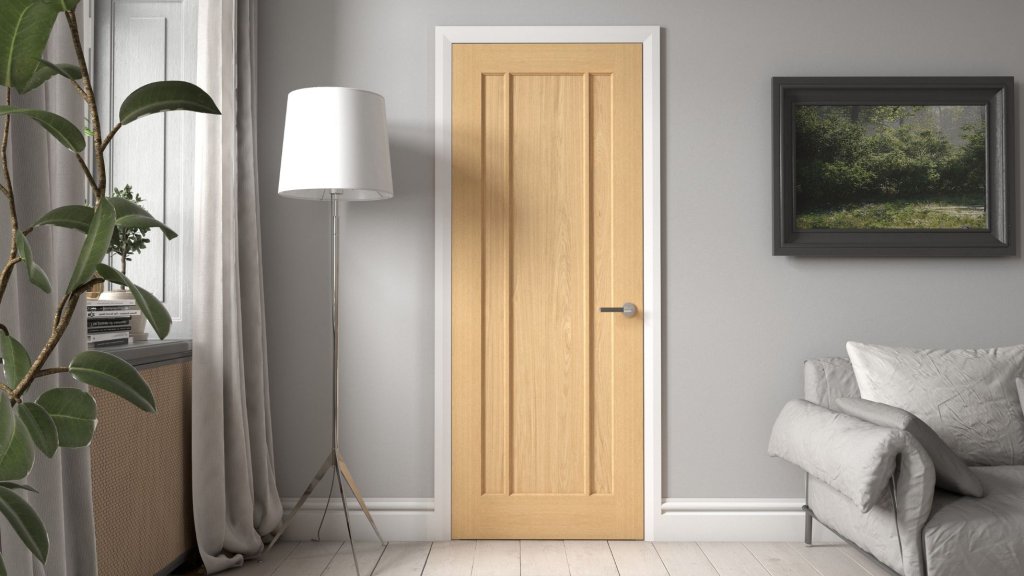
Are Oak Doors Still in Fashion?
Yes! Their timeless appeal, durability and natural beauty make them a popular choice for homeowners. Oak doors can be styled to fit various interior design themes, from traditional to contemporary. Whether you prefer a classic stained finish or a bespoke painted look, oak doors offer a versatile and elegant solution for any home.
The primary difference between solid oak doors and oak veneer doors lies in their construction. Solid oak doors are made entirely from solid oak wood, offering a luxurious and durable option. They can be sanded and refinished multiple times over their lifespan.
Oak veneer doors, on the other hand, have a thin layer of real oak veneer applied to a core material like MDF or plywood. While they offer a similar aesthetic to solid oak, they are generally more affordable and less prone to warping or cracking.
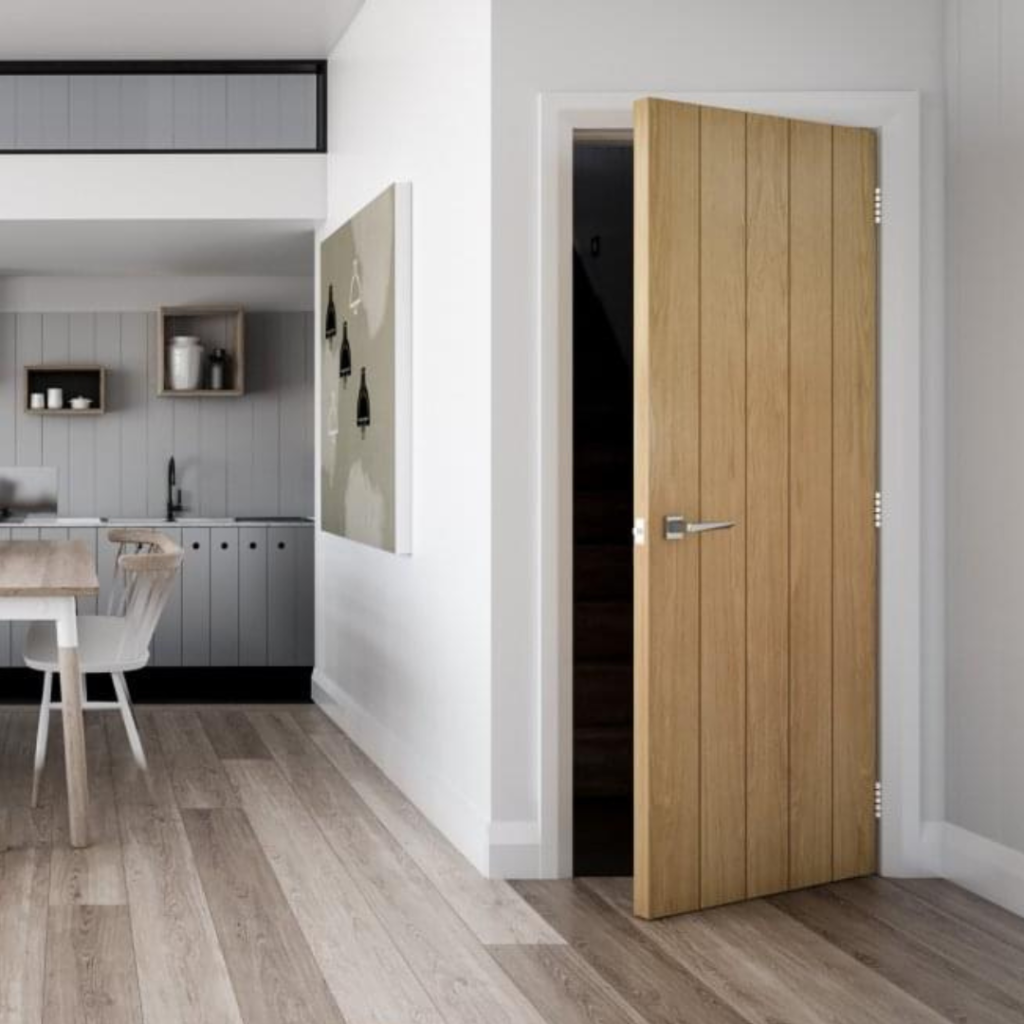
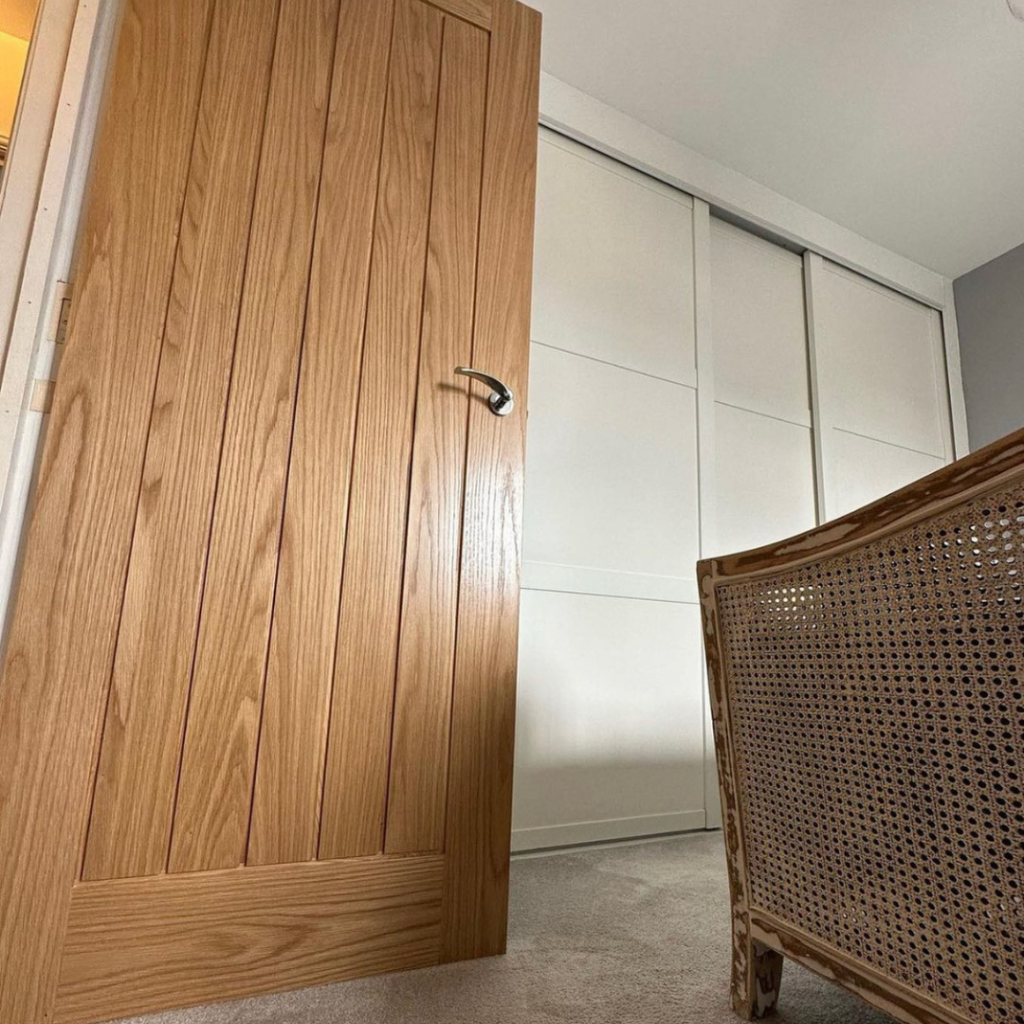
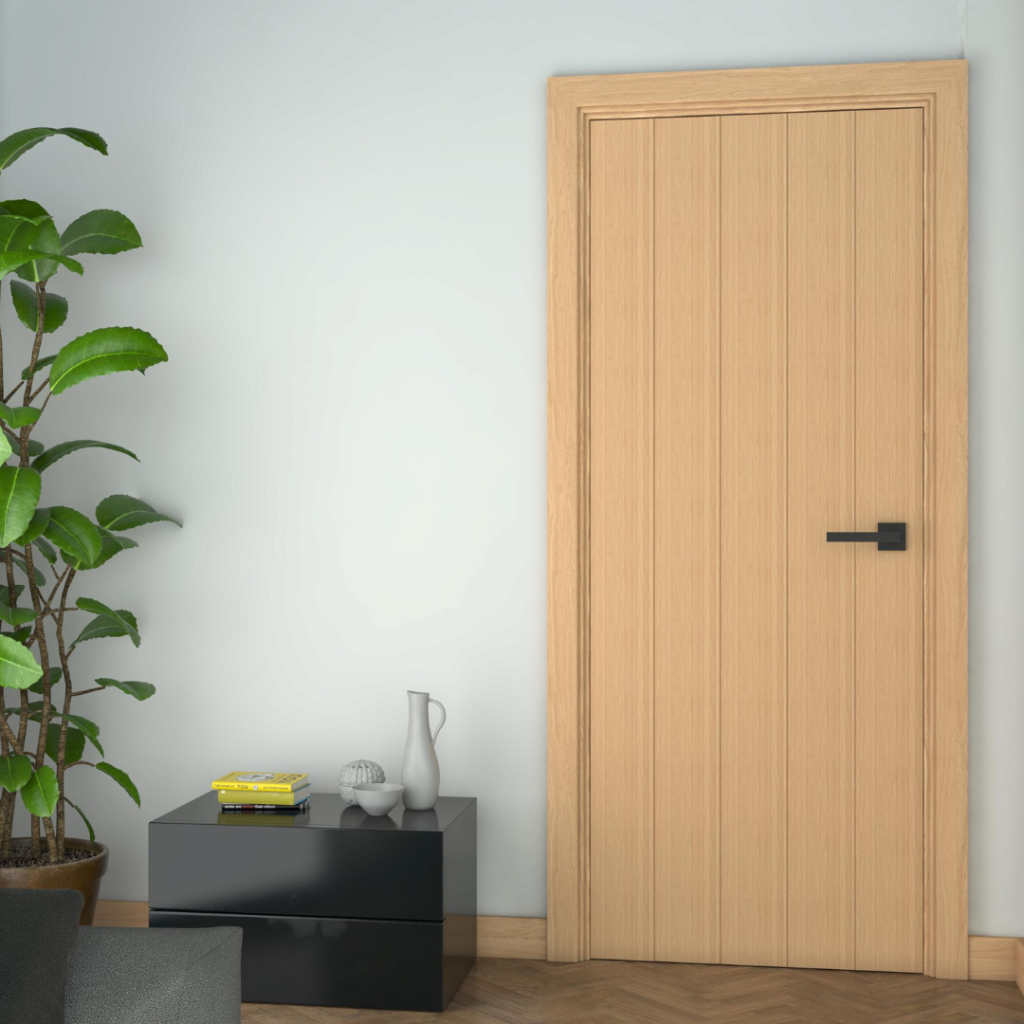
What are Mexicano Oak Doors?
Classic-meets-contemporary with Mexicano oak doors. A consistent bestseller and a popular choice for homeowners seeking a stylish and affordable option for doors.
They’re characterised by a simple, elegant design (often featuring a combination of solid oak and oak veneer) and feature a grooved look. This construction offers a balance of durability and aesthetic appeal.
Mexicano oak doors are versatile and are available in a variety of sizes and finishes, making them suitable for various room configurations and design preferences. Ideal for evoking warmth, texture and natural wood tones while providing a clean finish.
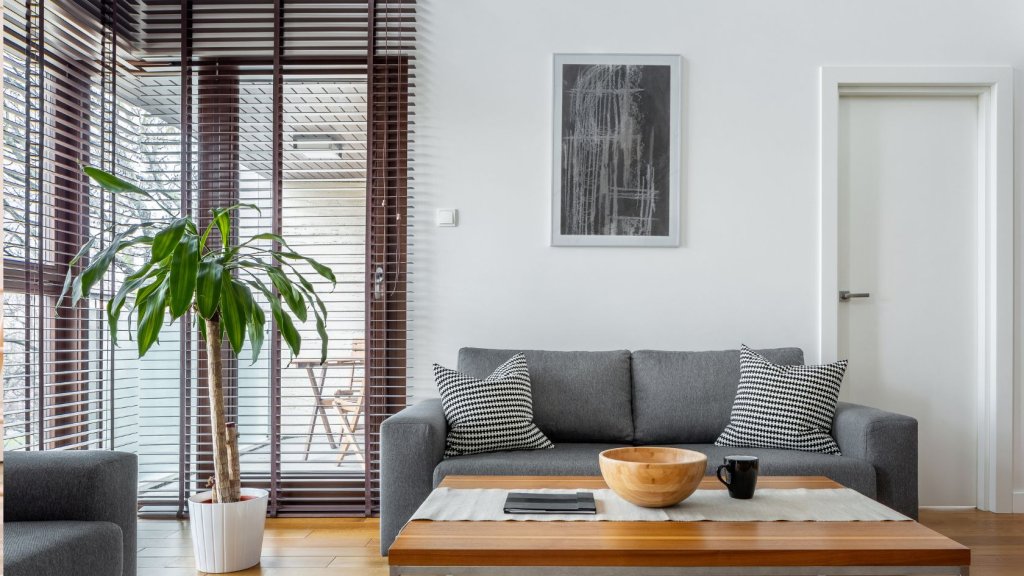
Should Interior Doors Be White?
White internal doors have become increasingly popular in recent years due to their versatility and illuminating capabilities. Mainly, they brighten up a space, making it feel more spacious and airy. White doors also contrast well with darker wall colours and are a must-have addition to neutral homes.
When you’re ready for a change, simply paint or stain them to match your colour schemes for optimum flexibility and adaptability. White interior doors also help to establish a sense of continuity and flow throughout a home, especially when paired with white trim and skirting boards.
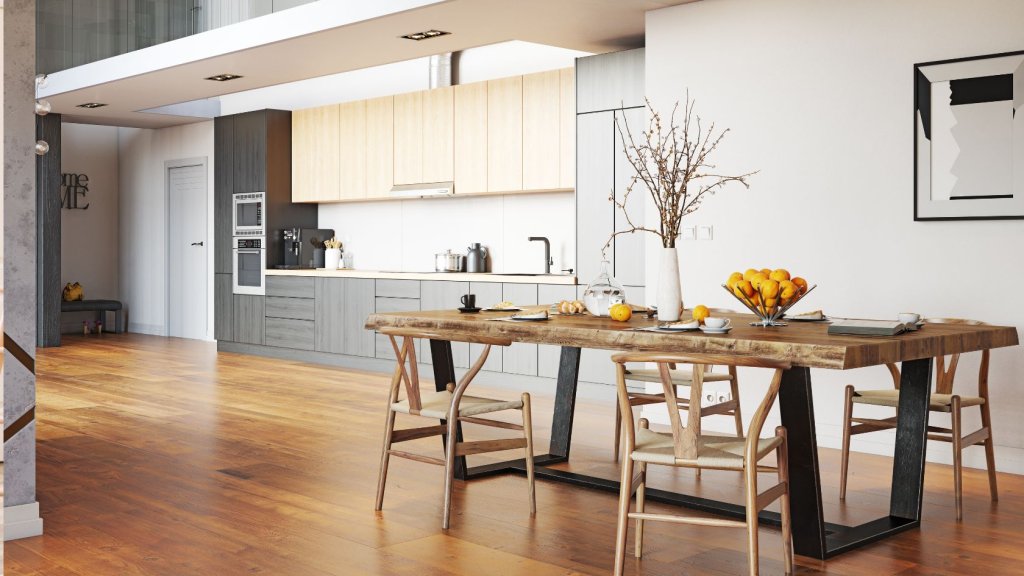
Which Internal Doors Need to Be Fire Rated in the UK?
Fire doors are a vital safety features in buildings. They’re designed to resist the spread of fire and smoke for a specific period, typically measured in minutes.
Fire door ratings (FD30 or FD60) indicate the length of time the door can withstand a standard fire test. Higher ratings denote greater fire resistance.
It’s crucial to ensure fire doors are installed and maintained correctly to maximise their effectiveness in protecting lives and property. In the UK, specific regulations dictate which internal doors must be fire-rated so you’ll need to check this before beginning a new project.
Primarily, any door leading from a communal area (hallways or stairwells) to a habitable room in a multi-storey dwelling must be fire-rated. This typically includes doors to bedrooms, living rooms and kitchens.
Additionally, fire doors may be required in other specific circumstances, such as in properties with loft conversions or extensions. Consult local building regulations and seek advice from a qualified professional to determine the specific fire door requirements for your property.
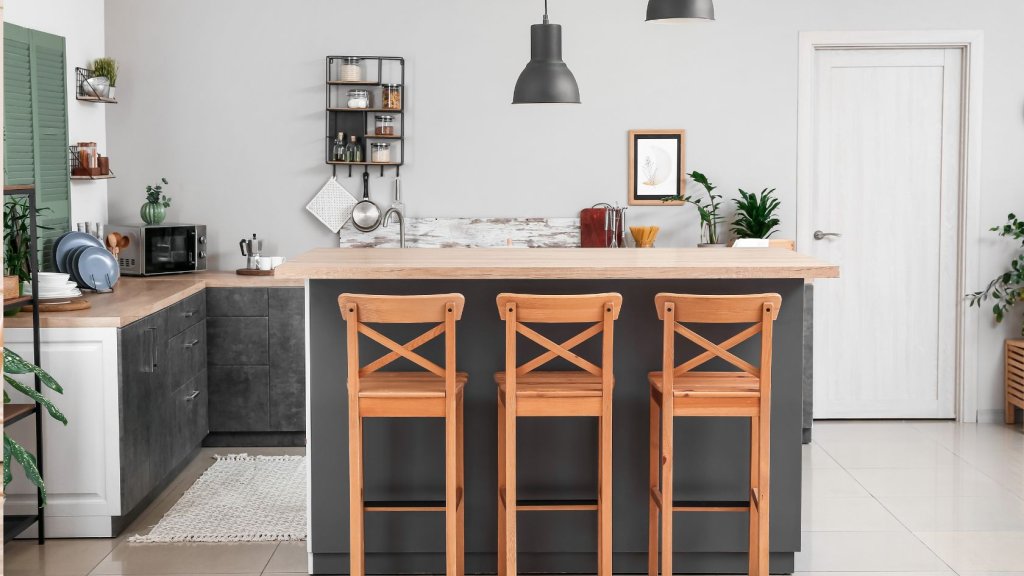
How do I Know if a Door is Fire Rated?
To determine if a door is fire-rated, look for specific markings on the door itself or its frame. These markings typically include a certification label or a fire rating symbol. The symbol will indicate the door’s resistance to fire, measured in minutes.
Also good to know: fire doors often have a specific type of intumescent strip around the edges, which expands when exposed to heat. This seals gaps and prevents the spread of fire and smoke.
If you’re unsure about a door’s fire rating, ask a professional or check local regulations. Need something bespoke? Contact our team to learn more about our custom fire doors service for a simple, secure solution.
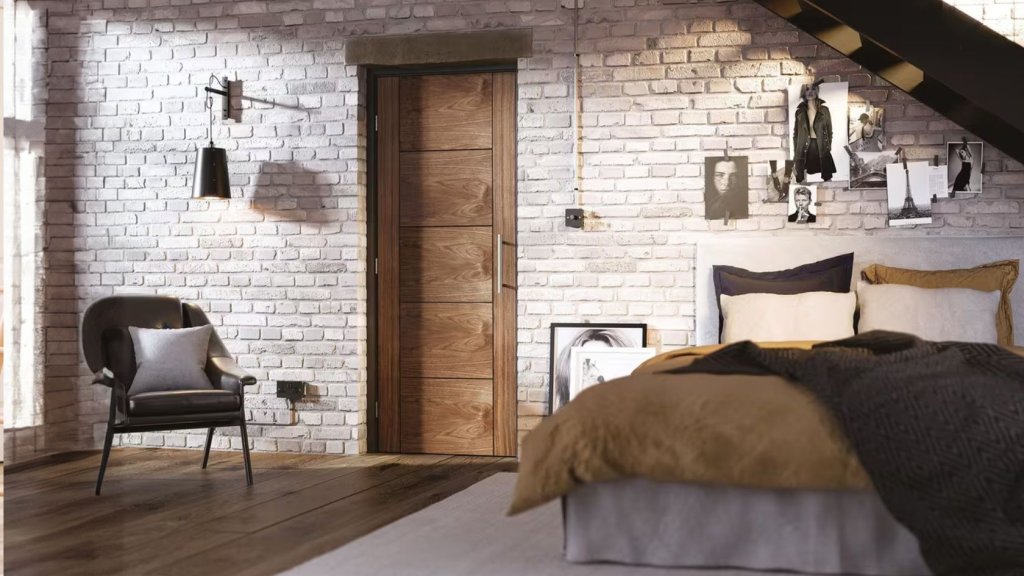
What Kind of Door is Best for Interior?
For bedrooms and living spaces, solid doors offer excellent soundproofing and insulation. Hollow core doors are a more affordable option for less-used rooms like closets or pantries. For bathrooms and kitchens, moisture-resistant doors made of materials such as MDF or engineered wood are ideal.
Glass doors can dial in a edgier touch and bring a lighter feel to living areas, utility rooms, hallways and dining rooms. Prefer a decluttered look? Sleek sliding doors are perfect for spaces where space-saving is a priority.
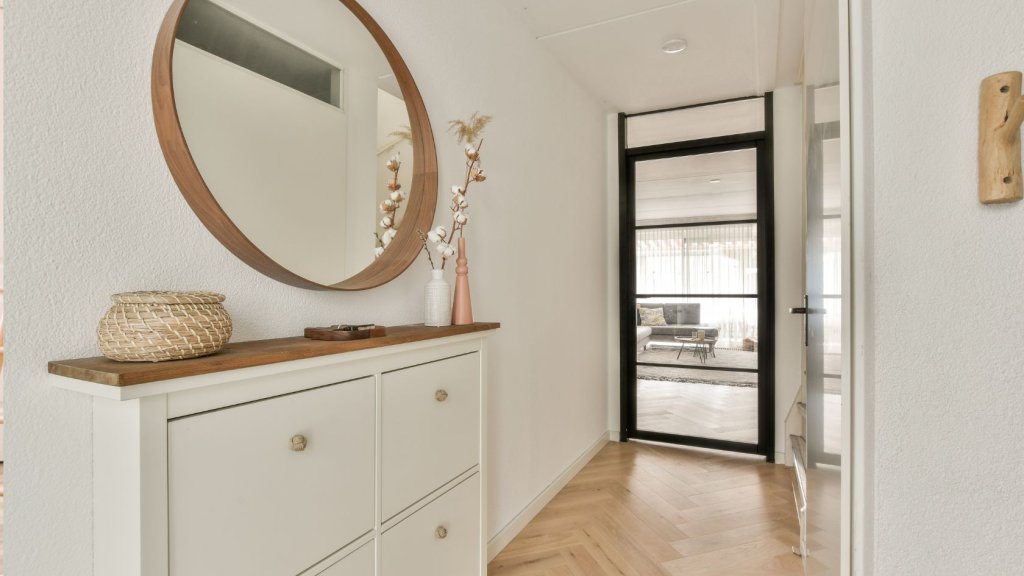
Are Glazed Internal Doors a Good Idea?
It’s time to think beyond glass patio doors. Glazed internal doors offer several benefits for present day homes. Most importantly, they provide openness and light, making spaces feel larger and more airy and reduce the need for artificial lighting, saving energy costs.
Meanwhile, internal doors with frosted glass are just what’s needed to capture a streamlined look while illuminating darker areas. Think: mud rooms, laundry rooms and storage spaces. These types of designs also work well for home offices; keeping work and living areas separated and defined.
Glazed doors can be used to unite different areas (such as the kitchen and dining room) while ensuring visibility. Handy if you need to keep an eye on little ones or pets. They also introduce a contemporary and stylish nod to any interior design scheme.
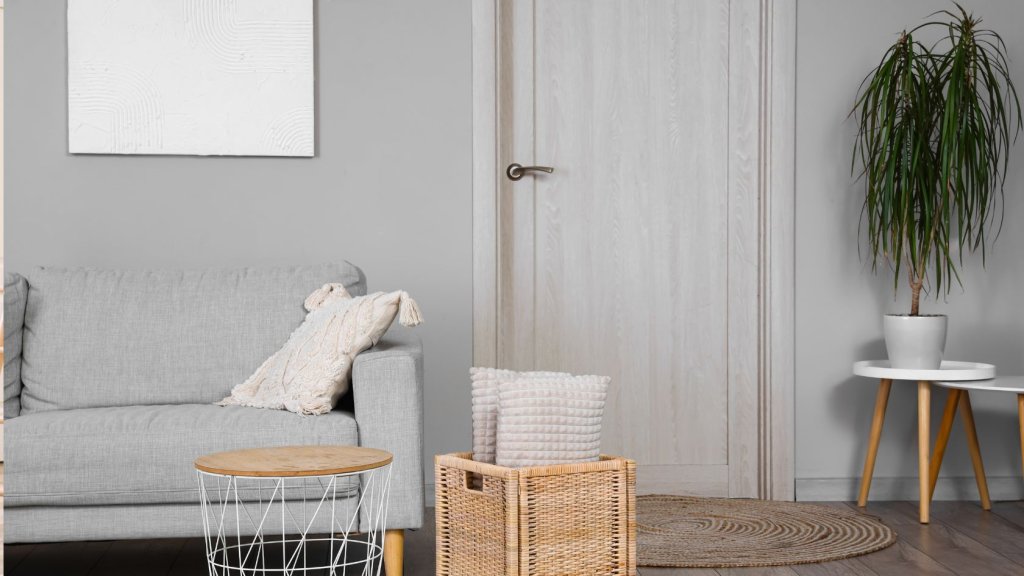
Best Internal Doors for a Modern House
Flush doors with clean lines and simple hardware create a contemporary and sophisticated end result. Meanwhile, doors with decorative glazed panels infuse elegance and help to visually connect different spaces.
Seeking a more striking and stylish solution? Choose black internal doors or industrial style doors for a monochrome vibe. Go one step further and incorporate smart technology (automated door openers or smart locks) for a progressive approach to daily living.
Dive into our exclusive, behind the scenes project case studies to see which designs our customers are loving right now.
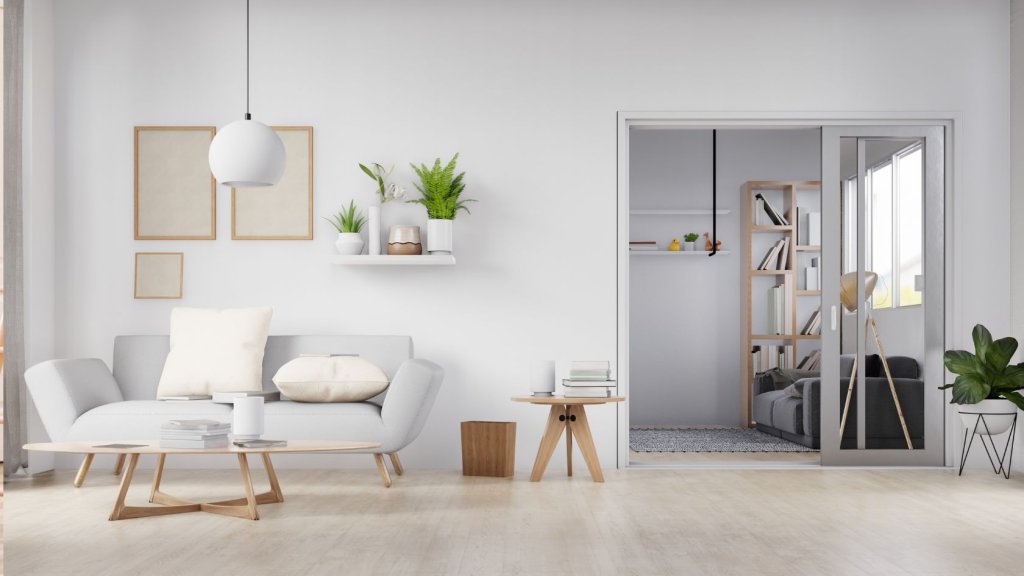
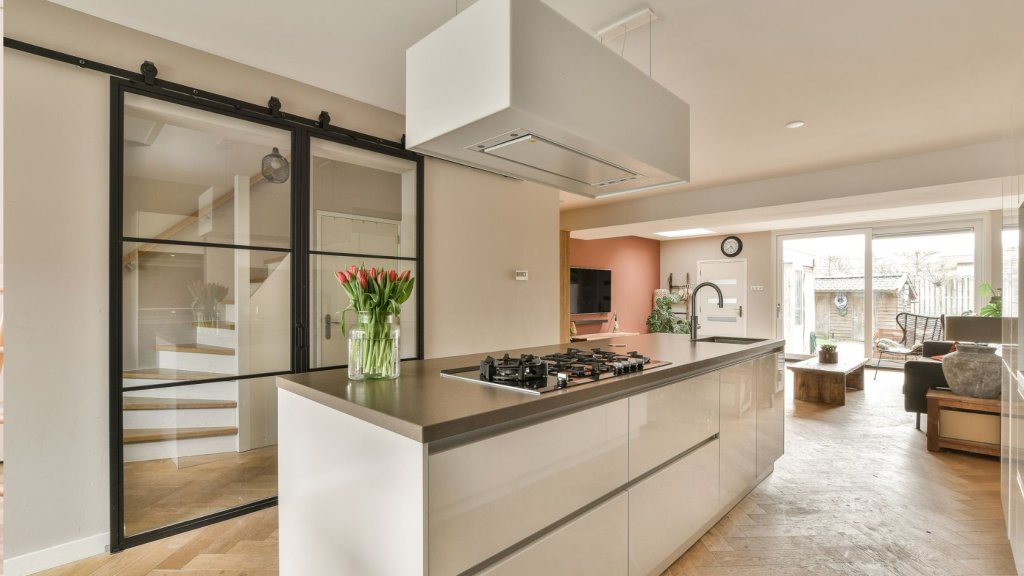
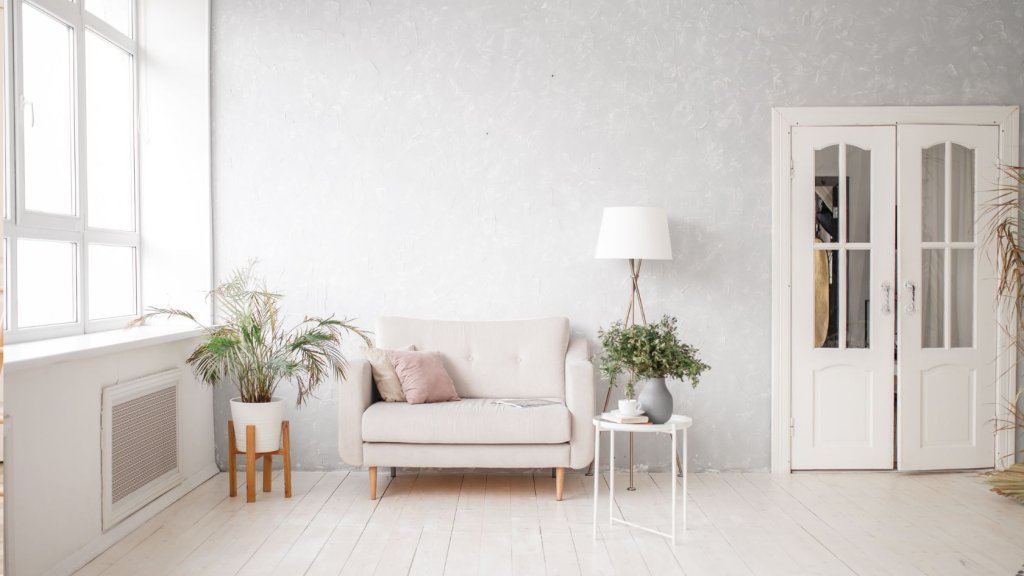
Which Interior Doors are Best for Maximising Space?
Pocket Doors
In-demand pocket doors slide into a wall cavity, saving space and creating a seamless transition between rooms. They are ideal for smaller spaces or open-plan layouts.
Bifold Doors
Composed of multiple panels that fold back against each other folding doors are perfect for dividing large spaces or creating flexible room configurations.
Barn Doors
These large, sliding doors roll along a track on the wall. They can be used to create a dramatic entrance or divide a large space. Barn doors are often found in industrial-style or rustic homes.
French Double Doors
Elegantly designed French double doors consist of two hinged panels with large glass panes. They offer a classic and smart look, allowing ample natural light to fill a room.
Gain a deeper understanding of the partitioned spaces trend and choose the best bifold door system using our buyer’s guide.
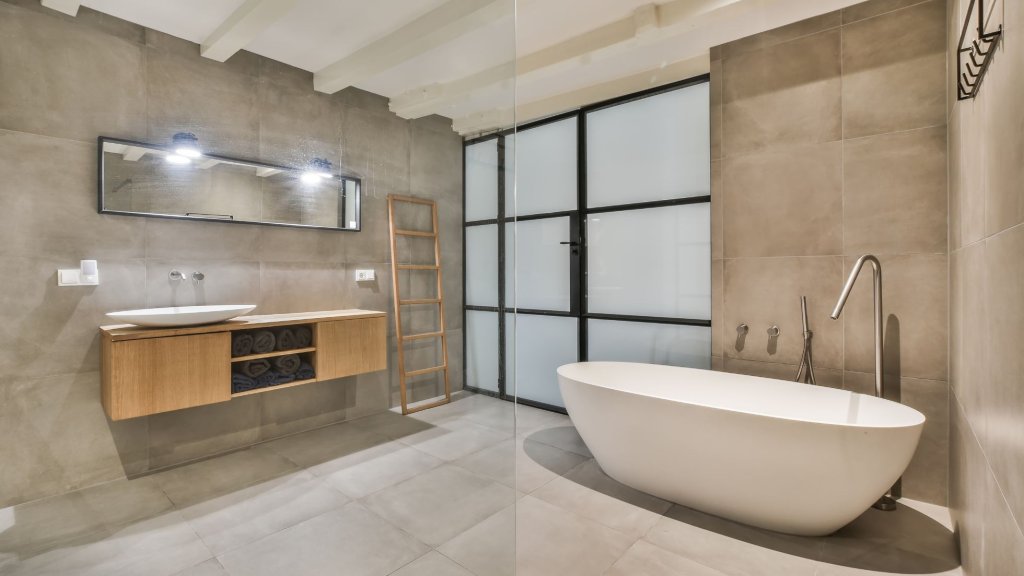
Black Industrial Internal Doors in the Spotlight
Black industrial internal doors offer a unique blend of polish and practicality. Their dark, bold aesthetic injects drama and depth for a pleasing finish.
Made from durable materials these doors are highly resistant to damage and wear and tear. Their solid construction also provides excellent soundproofing and insulation, making them ideal for homes with open-plan layouts or noisy environments.
Black industrial style doors (sometimes referred to as Crittall Style Doors which is a brand name) can be customised in various finishes and sizes to suit different design preferences.
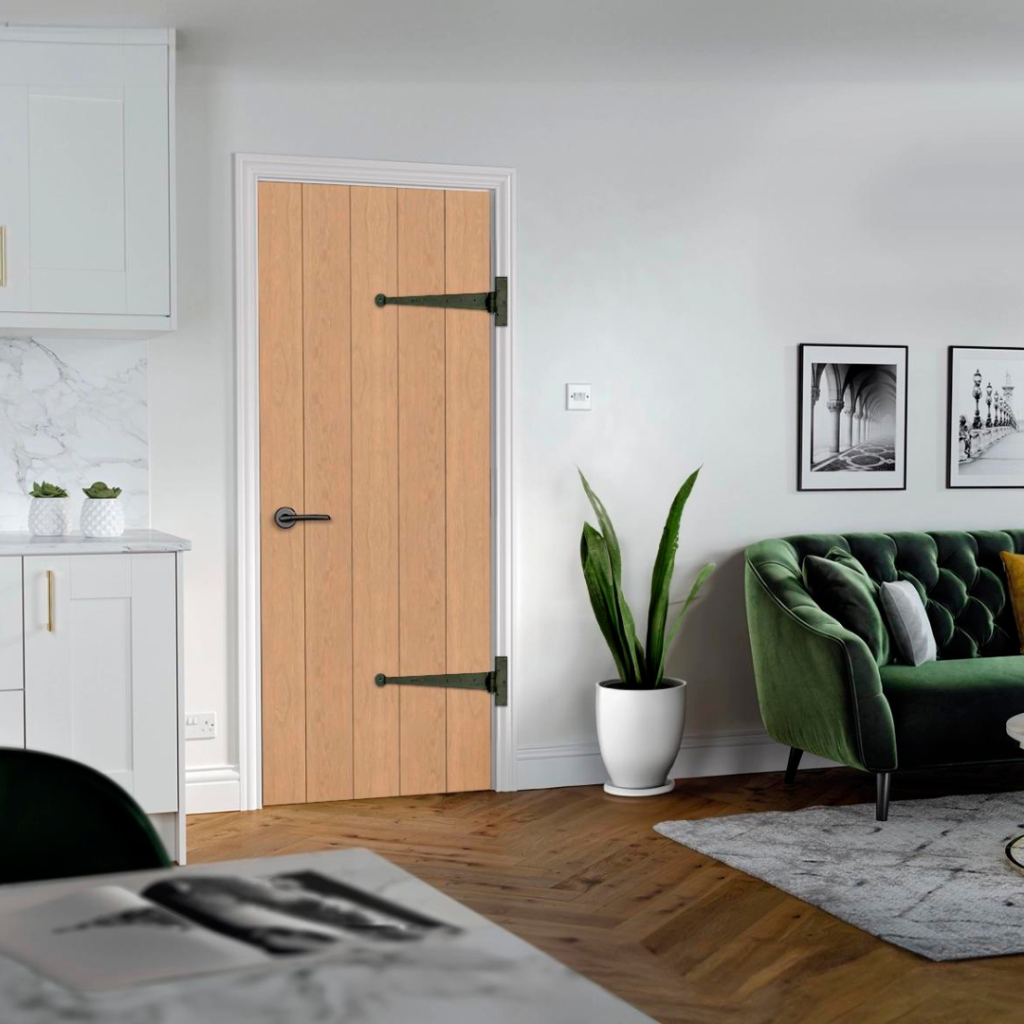
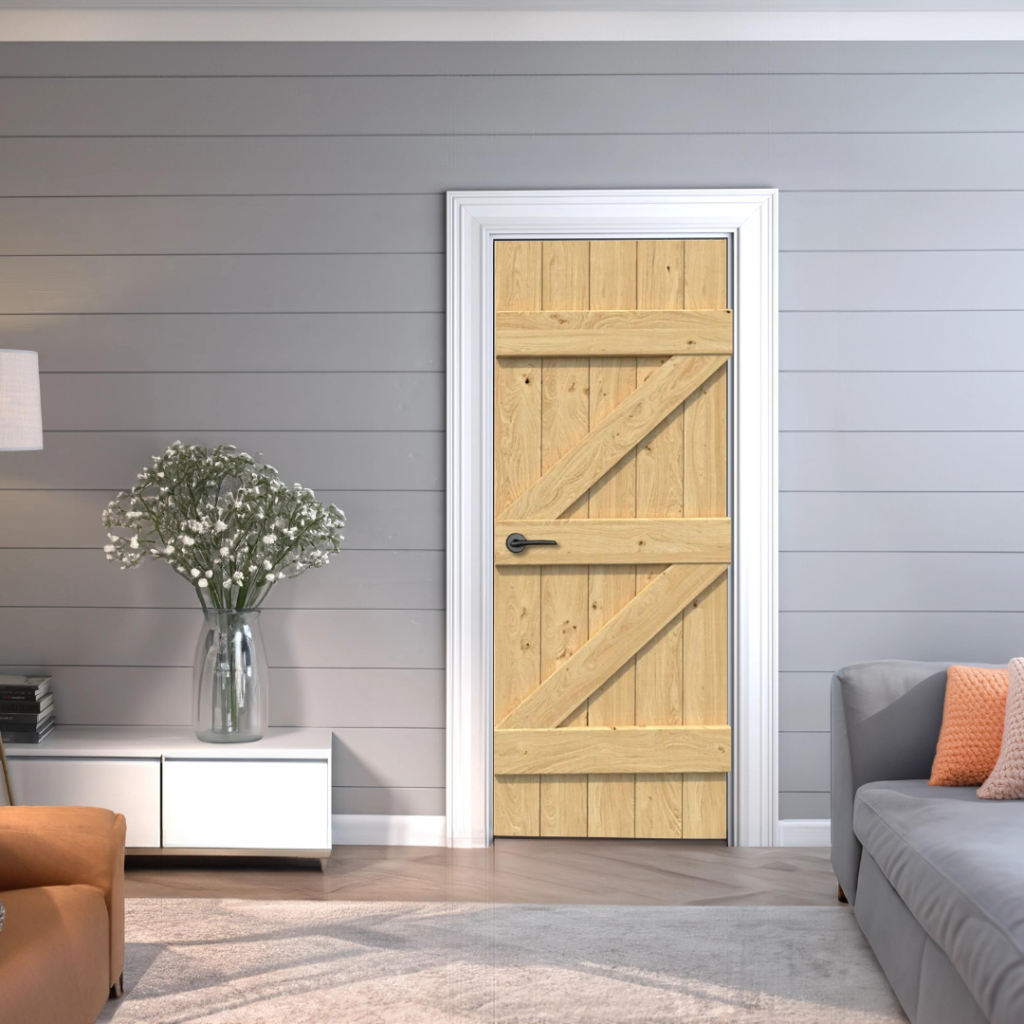
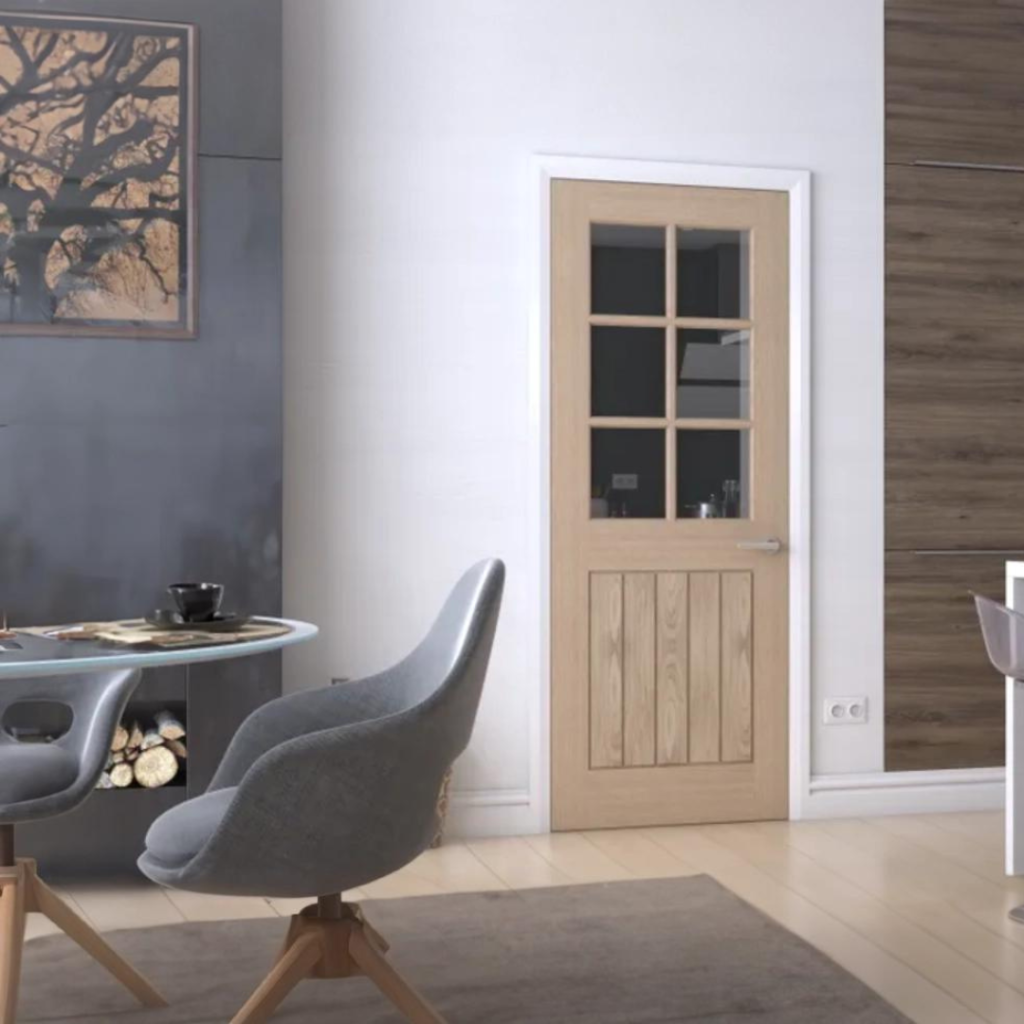
The Rise of Cottage Style Internal Doors
Modern cottage style internal doors celebrate rustic craftsmanship and traditional elegance. They often include detailing such as raised panels or mouldings and may have glazed sections.
These doors are typically made from solid wood, such as oak or pine and are often finished with a natural stain or paint to highlight the wood grain. Cottage style doors are hugely popular right now due to the cottagecore interior design trend.
Buy internal cottage style doors if you’re seeking to curate a cosy and inviting atmosphere or if you’re shopping for a property with a traditional or country style aesthetic.
Delve into Cottagecore Interior Design and Modern Farmhouse Interior Design with our must-read trend reports.
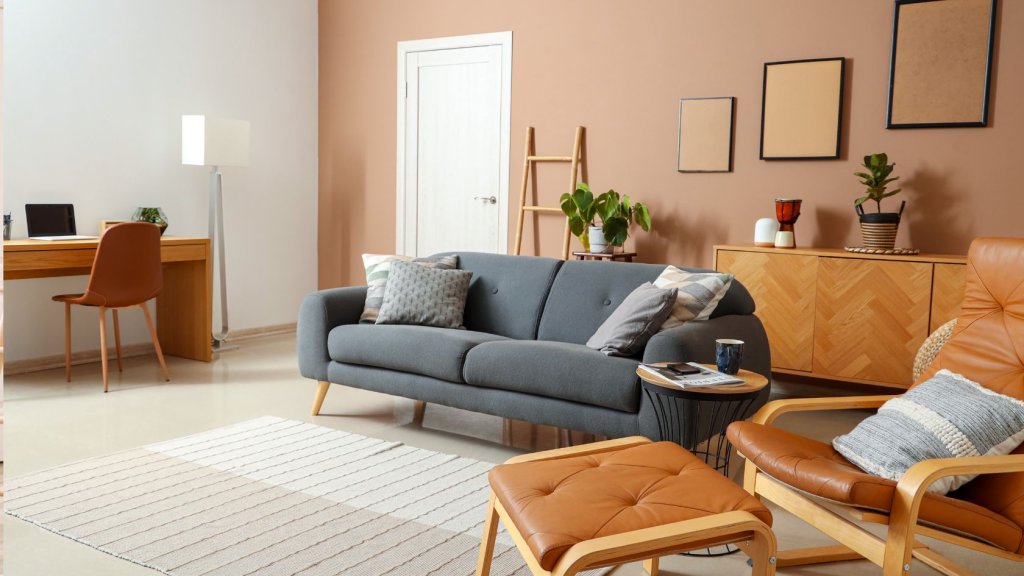
Most Popular Internal Door Styles and Sizes
The most common standard size for internal doors in the UK is 1981mm x 762mm x 35mm, often referred to as a 2’6″ door. Other standard sizes are available, including those for smaller openings or for wheelchair accessibility. Make sure to measure your door openings accurately to ensure a perfect fit.
| Panel Doors | Classic doors with raised or recessed panels available in a variety of woods and finishes. Offer timeless appeal and suitable for both period and contemporary homes |
| Flush Doors | Minimalist and sleek. Have a clean, flat surface perfect for contemporary interiors. Can be made from various materials, including MDF, engineered wood, or solid wood. |
| Glazed Doors | Combine style and functionality. Feature glass panels that allow natural light to flow. Often used to create a sense of openness and connection between spaces. |
| Shaker Doors | Offer a simple, clean-lined aesthetic making them a popular choice for forward-thinking and traditional interiors alike. Easy to match with cabinetry in kitchens and bathrooms. |
Learn more about standard door frame sizes, find out how to paint door frames and see how to remove skirting boards and revamp them for a consistent finish.
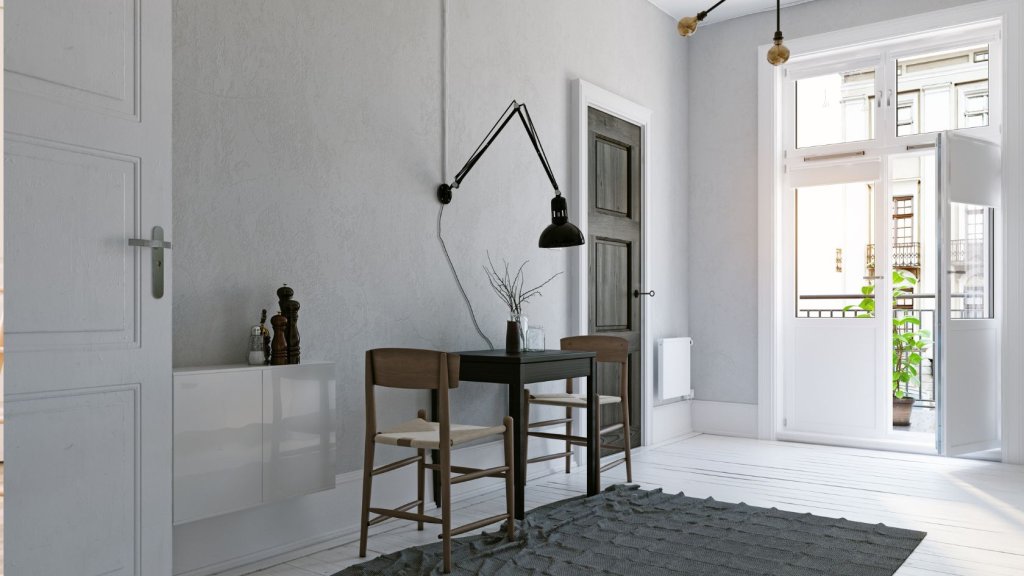
Can you Mix Door Styles in a Home?
Mixing internal door styles promotes visual interest and personality within your home. However, it’s important to do so thoughtfully.
Use a consistent theme (a specific material, colour palette or concept) to tie the different styles together. For example, mix traditional panel doors with flush doors, but paint them the same shade. Another idea is to invest in a mix of glazed doors and solid doors to enjoy openness and light in some areas and quiet seclusion in others.
It’s usually best to stick with one type of wood (such as oak) throughout a property. However, wooden tones can be combined with neutrals (greige, black, white) for a low-key, Scandinavian vibe. This approach is also effective for accent walls or when you want doors to be ‘hidden’ or blended into the wall.
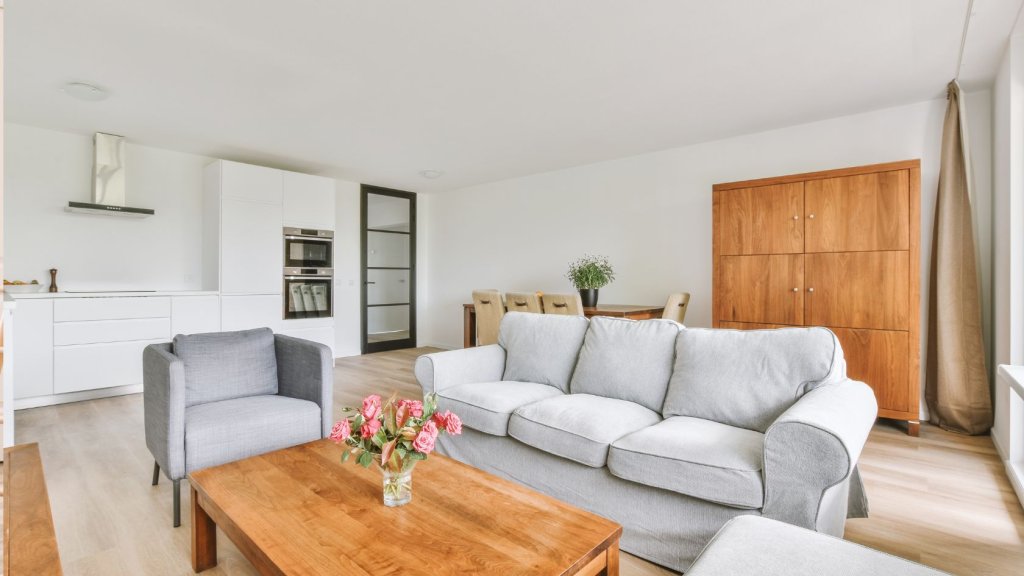
How do I Choose an Interior Door?
So, what to look for in internal doors? First, determine the style that best suits your home’s aesthetic. If you’re decorating a Victorian home, say, you may want to opt for Victorian internal doors to capture that true authentic feel.
When working out which interior doors are best, take time to decide on the the material. Think about all options such as solid wood, hollow core or engineered wood. Remember solid wood doors offer durability and soundproofing while hollow core doors are more budget-friendly.
Next, factor in the door’s function. For example, a bedroom door might prioritise soundproofing while a bathroom door would need moisture resistance. Finally, don’t forget about door hardware which can instantly transform or update the look of doors.
Discover how to change door handles and find out how to plane doors and adjust door hinges for perfect fit and function. Plus, see how to fix common door problems and winterproof your home.
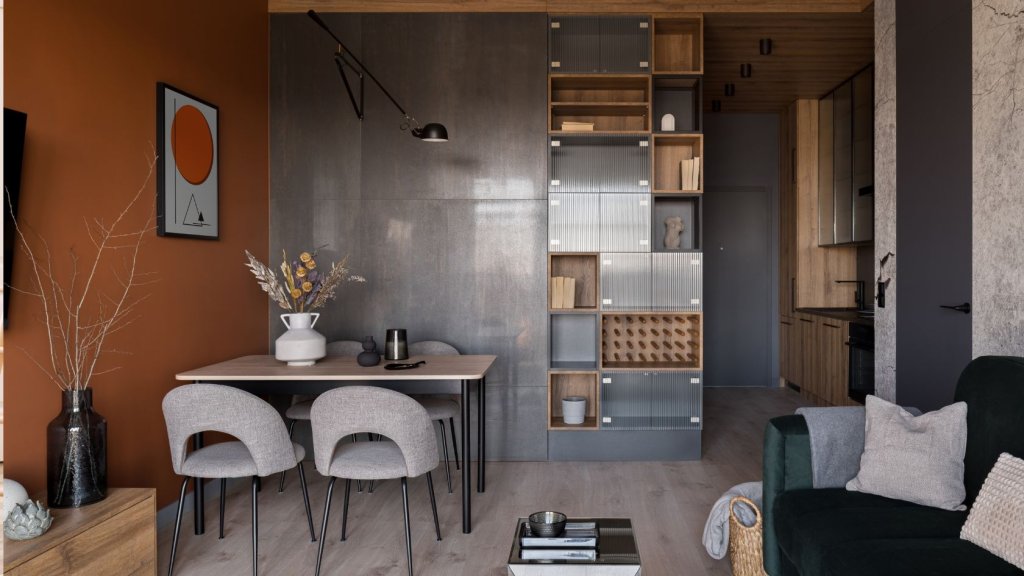
Decide Which Interior Doors Are Best With Confidence
Choosing the best interior doors is crucial for both the aesthetics and accessibility of your home. Whether you’re shopping for a home renovation or property development, well-chosen designs are key to achieving a flawless finish and adding value.
Upgrade the look and feel of any interior by showcasing a mix of styles, materials and finishes that signify quality and durability. And don’t forget to think about features such as soundproofing, fire safety and energy efficiency when making your decision.
Select doors that complement your home’s architecture and your personal style to set the tone for a space that’s gorgeous and functional. Find your dream design and buy internal doors online today or contact our team for a competitive quote.



